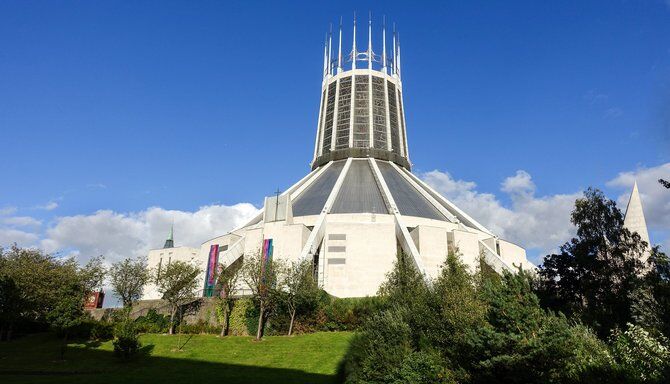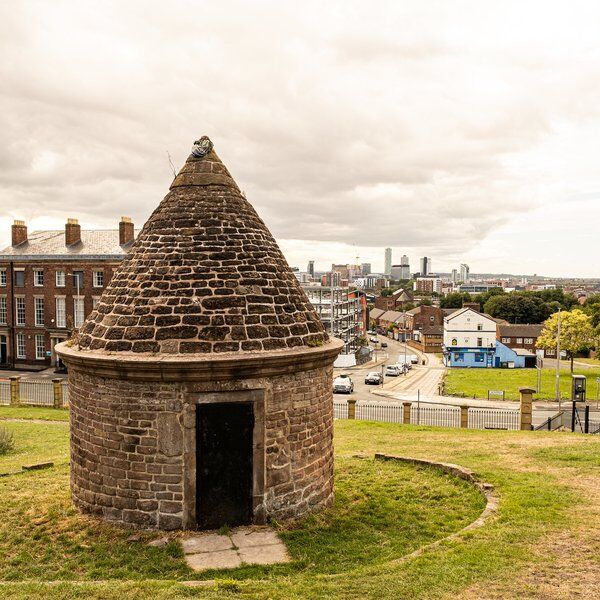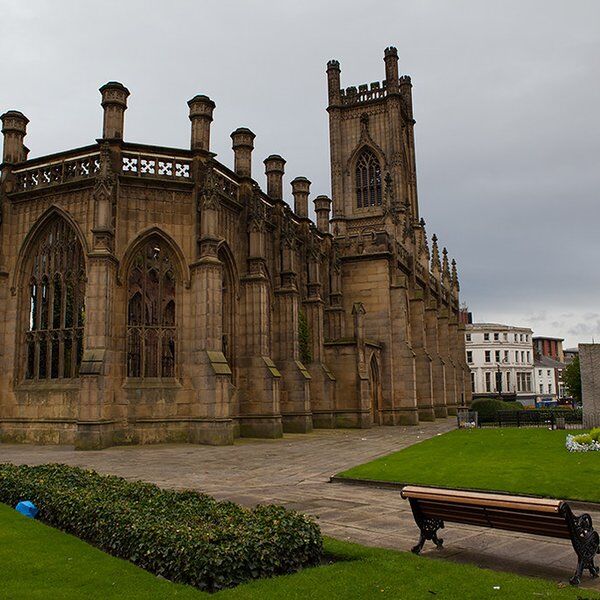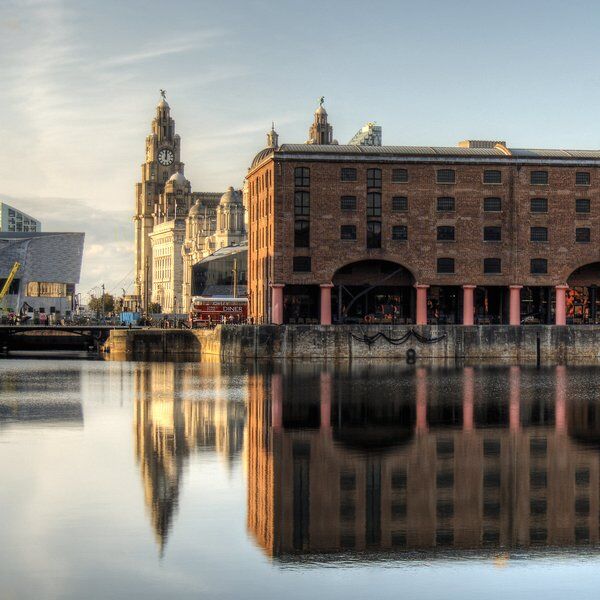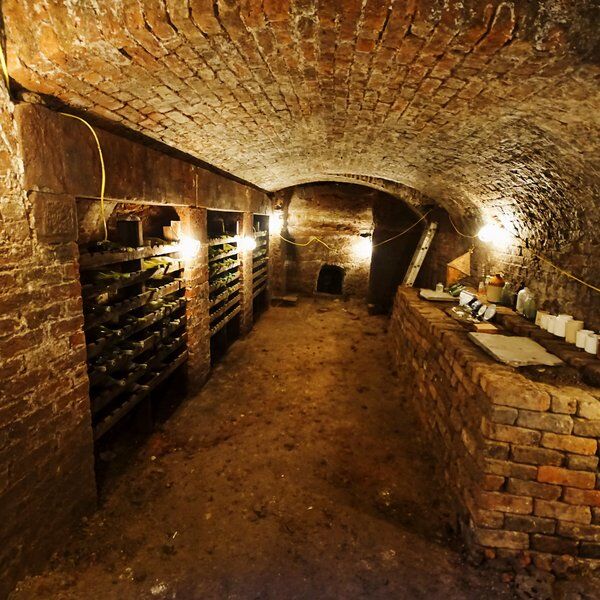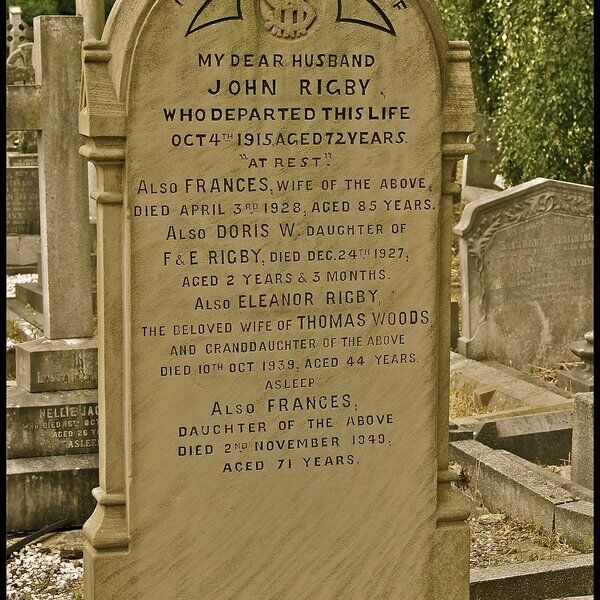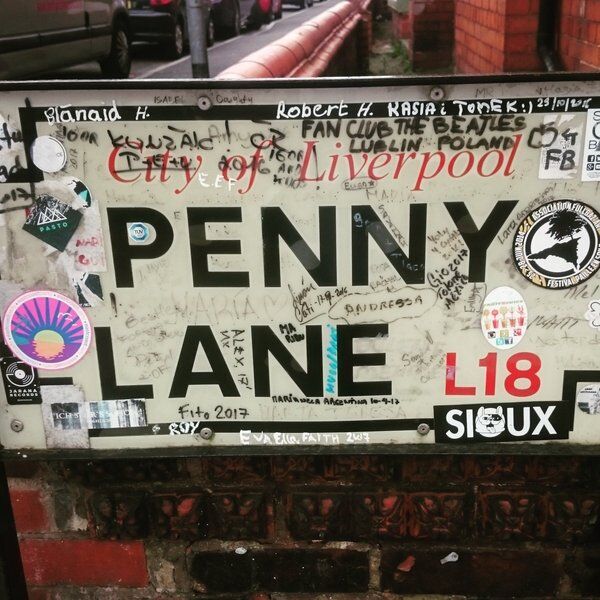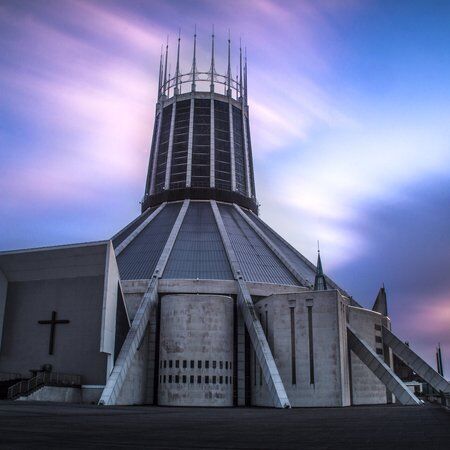
Discovering Liverpool's Metropolitan Cathedral
Liverpool's Metropolitan Cathedral of Christ the King, affectionately known as "Paddy's Wigwam," casts a striking and easily-recognisable silhouette in the city’s skyline. The Cathedral's design, with its soaring white concrete buttresses and glassy tower, emerged from an open competition, won by Sir Frederick Gibberd. Today, as a Grade II* listed building, it holds a special place in Liverpool's architectural landscape.
Visitors can explore the Cathedral seven days a week, with free admission at all times. It also houses the magnificent Lutyens Crypt and Treasury, designed by Sir Edwin Lutyens.

The History of the Liverpool Metropolitan Cathedral’s Design
Ever since the influx of Catholic immigrants to Liverpool during the Great Irish Famine of the mid-19th century, the coadjutor Bishop of Liverpool, Alexander Goss, envisioned a grand Cathedral to accommodate this growing religious community. The chosen site for this project was the grounds of St. Edward's College on St. Domingo Road, Everton. However, the Liverpool Metropolitan Cathedral that exists today is actually the fourth attempt by the Catholic Church in the North West of England, to erect a mother church for the Liverpool diocese.
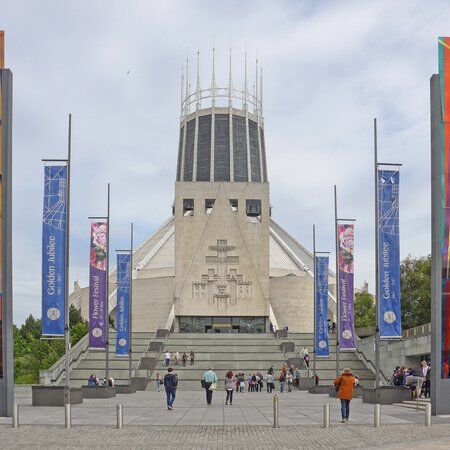
Pugin Design
In 1853, Bishop Goss commissioned Edward Welby Pugin, a renowned architect of the Gothic Revival movement, to design the Cathedral. Pugin's vision began to take shape with the completion of the Lady chapel by 1856, which was later named Our Lady Immaculate.
Despite the initial progress, financial constraints diverted resources towards more immediate needs such as parish churches, schools, and orphanages as the Catholic population continued to grow rapidly.

Lutyens Design
In 1930, the dream of a grand Cathedral in Liverpool was reignited with the acquisition of the former Brownlow Hill workhouse site. Sir Edwin Lutyens, a well-known British architect, was tasked with designing a Cathedral that would stand as a worthy counterpart to the Neo-gothic Anglican Cathedral designed by Giles Gilbert Scott on Hope Street.
Lutyens wanted to create a structure that would rival the world's largest churches. For example his design consisted of a colossal dome, bigger than St. Peter's Basilica in Vatican City. Funded largely by contributions from Liverpool’s working-class Catholics, construction commenced on Whit Monday, 5 June 1933.
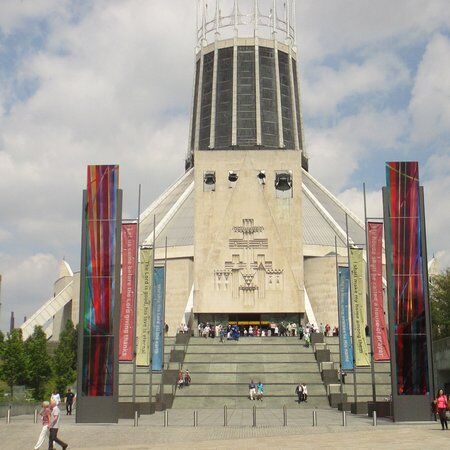
However, the onset of World War II and an escalation in construction costs from £3 million to £27 million (£1.42 billion in 2021) led to the suspension of building activities in 1941. Despite efforts to resume construction in 1956, only the crypt was completed by 1958 before the project was abandoned. Today, at the Museum of Liverpool, a model of Lutyens' Cathedral stands as a testament to the grand vision that never came to be.
Following the abandonment of Lutyens' design, the responsibility for crafting a Cathedral fell to Adrian Gilbert Scott. His proposed scaled-down version of Lutyens' concept, which retained the central feature of a massive dome, faced criticism and was ultimately rejected. The journey of Liverpool Metropolitan Cathedral is one marked by grand ambition, financial constraints, and the enduring legacy of architectural visionaries.
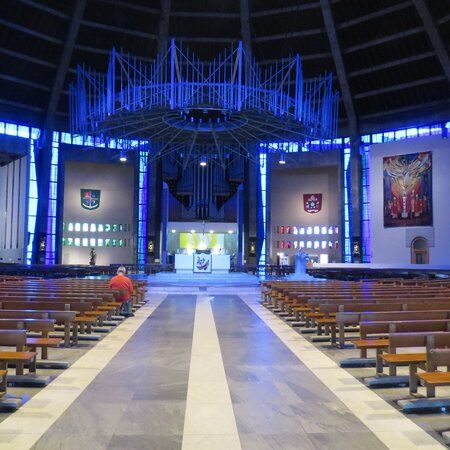
Scots Design
In 1953, after the failure of Lutyens’ impractical design, Adrian Gilbert Scott, brother of the Anglican Cathedral's architect, was appointed by Archbishop Godfrey to create a new design. Scott proposed a scaled-down version of Lutyens' design, but keeping the distinctive dome. However, with a budget of £4 million, there were doubts about the feasibility of the project and Archbishop Heenan, who replaced Godfrey, decided to scrap the plans and start anew.
Gibberd's design
In 1959, a competition was held to design the Liverpool Metropolitan Cathedral, with architect Sir Frederick Gibberd’s design being chosen from 300 entries. The main requirements were to accommodate a congregation of 2,000 who could all clearly see the altar, and to incorporate the existing Lutyens crypt into the structure. Gibberd's solution was a circular design with the altar at its centre, using the crypt's roof as an elevated platform. The construction contract was awarded to Taylor Woodrow.
Despite its ambition, the Cathedral soon revealed architectural flaws, sparking controversy and legal action against Gibberd, particularly concerning leaks in the aluminium roof covering and defects in the mosaic tiles. Nevertheless, on the Feast of Pentecost, 14 May 1967, less than five years after construction began, the Liverpool Metropolitan Cathedral was consecrated.
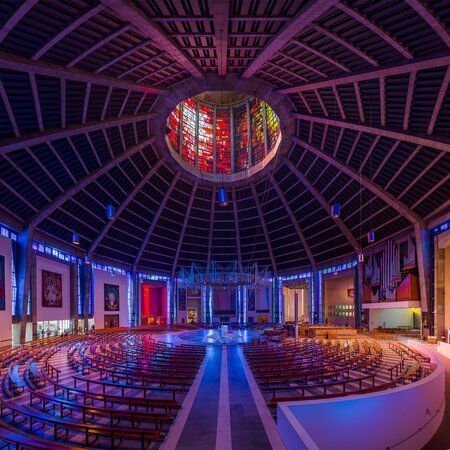
The Liverpool Metropolitan Cathedral’s Exterior Design
The Cathedral is mostly concrete with Portland stone cladding and an aluminium roof, featuring a circular plan with a diameter of 195 feet. Thirteen chapels surround the perimeter, while a conical tower, supported by 16 boomerang-shaped concrete trusses and flying buttresses, rises above. A lantern tower with stained glass windows by John Piper and Patrick Reyntiens, crowns the structure, which looks incredible when lit up at nighttime. The entrance, up a flight of steps on Hope Street, includes a bell tower and sculptures by artist William Mitchell.

Inside the Liverpool Metropolitan Cathedral
The Cathedral’s Interior
Inside the Cathedral, the white marble altar from Skopje, North Macedonia becomes the main focus. Marble flooring, designed by David Atkins, complements the circular layout. Surrounding the central nave are nine chapels, including the Blessed Sacrament Chapel, the Lady Chapel, and the Chapel of St. Joseph. Artistic highlights within these chapels include sculptures by Elisabeth Frink and Robert Brumby, as well as stained glass by Margaret Traherne and Ceri Richards.
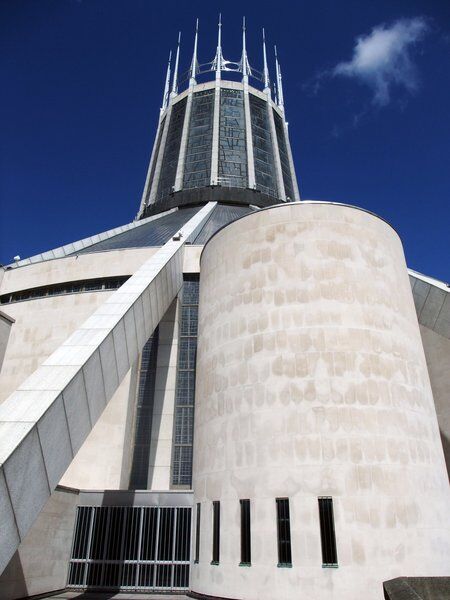
Cathedral Crypt
The crypt beneath the Liverpool Metropolitan Cathedral was initially designed by Lutyens. However, in 1962, Frederick Gibberd incorporated the crypt into his vision. Comprising brick and granite from Penryn, Cornwall, the crypt has many purposes. Annually, it transforms into the venue for the Liverpool Beer Festival, drawing enthusiasts from across the UK, Europe, the United States, and Australia. Additionally, during exam seasons, it provides a calming setting for University of Liverpool students to sit their examinations.
In 2009, £3 million was spent on restoring the crypt. This extensive renovation, unveiled by The Duke of Gloucester on May 1st, 2009, not only polished up the crypt but also improved its functionality for visitors and events. For instance, access points and lighting were enhanced and archive facilities and exhibitions were upgraded.
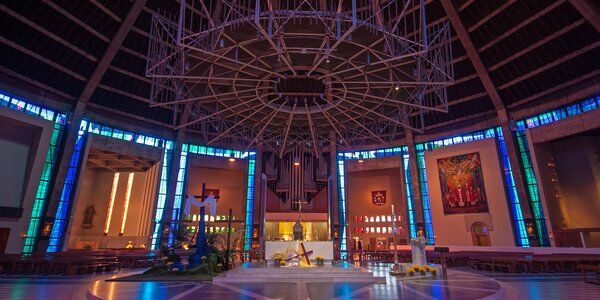
Cathedral Organ
The Cathedral's organ, crafted by J. W. Walker and Sons, was completed days before the Cathedral's inauguration in 1967. Its creation was integral to the Cathedral's design, as Gibbered wanted the organ’s shiny zinc pipes and brass trumpets to contrast with the Cathedral’s concrete pillars.
Liverpool Metropolitan Community Today
Beyond its architectural history the Liverpool Metropolitan Cathedral is vital to accommodate the spirit of the Catholic community in Liverpool. And demonstrates a passion and commitment that stood the test of time (and many setbacks) to accomplish this feat. Today, the Cathedral is the largest Catholic place of worship in the UK but also a beloved spiritual hub for people of all faiths and nations.
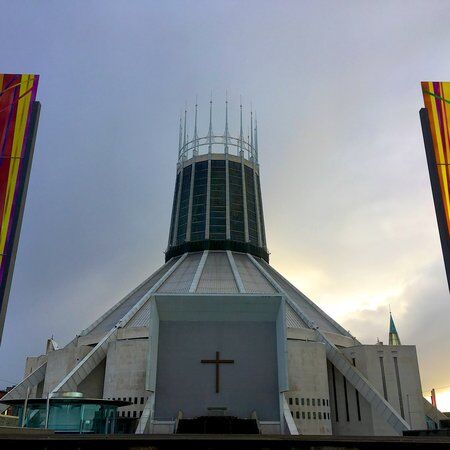
Explore Liverpool with CityDays
The best way to discover more hidden gems around Liverpool is to take your time and, ideally, have a pre-planned route that takes you past all the noteworthy nooks and hidden gems.
We can help you there!
Our brand-new routes, The Port That Rocked and Evolution of An Icon combine the fun of an outdoor treasure hunt with the historic facts and whimsical trivia of a walking tour.
Answer riddles, solve puzzles and learn more about Liverpool's history in a new and interactive way!
Take the stress out of planning your visit to Liverpool and book your adventure today!
Not visiting Liverpool this time? Don’t worry, you’ll find us all over the world.
